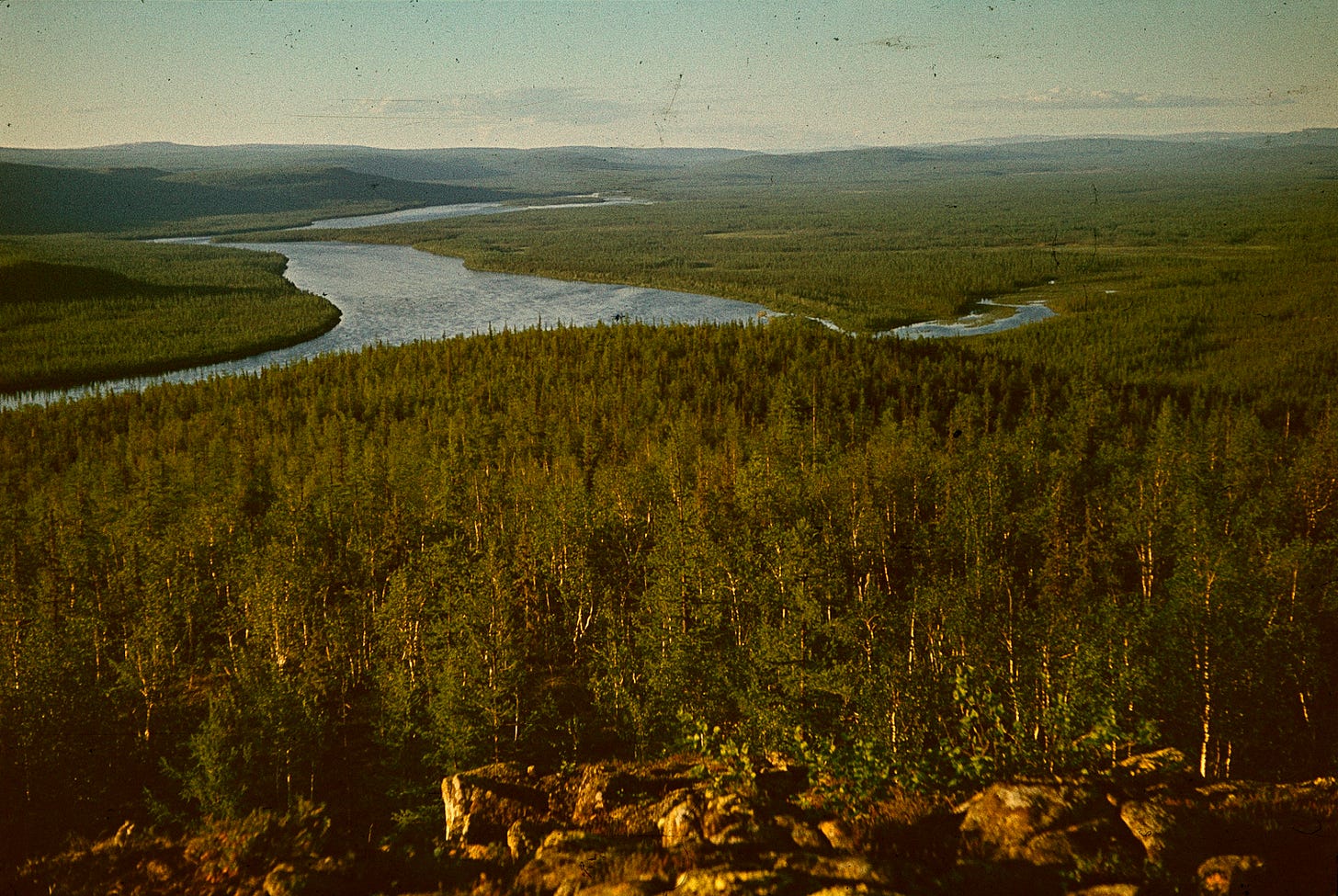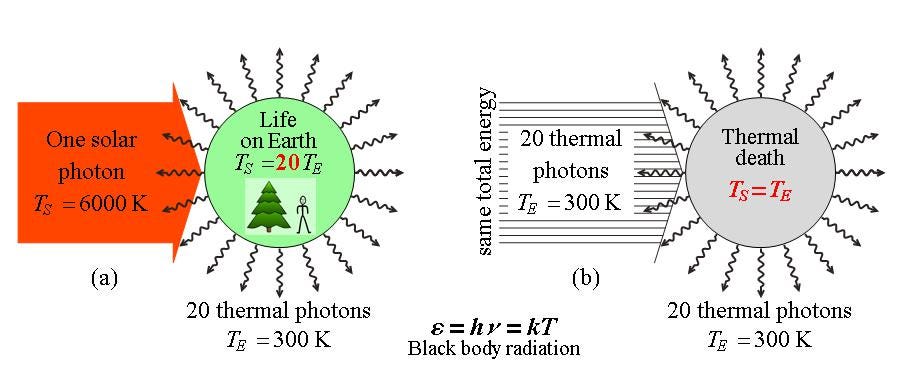Information processing by natural ecosystems
They have a built-in program of climate stabilization and run it super efficiently
Our attention is increasingly focused on the importance of computation. We are told that the one who computes more wins. To compute is to have an algorithm to which you feed some initial numbers, and which, after some operations, gives you another set of numbers that suit your goals. Often we find that this is about war: you feed the coordinates of enemy tanks into the algorithm, and the algorithm gives you a set of instructions on where to send your drones to destroy them. It can be about social control: you feed in the facial features of wanted criminals, and the algorithm returns a set of suspects from the urban crowd.
Living bodies compute. If I cut my finger while cooking dinner, my body’s algorithm will figure out what ingredients to take from the soup I will have eaten, how to chemically process them, and turn them into a patch of new skin so that my finger can heal. In fact, it is not just a computation, but a computation coupled with action.
Then time is ripe to realize that Life also computes. Natural ecosystems out there in the sun perform calculations and process information.
Photo taken in 1974 by Victor Gorshkov on the Kureika river in Siberia. This forest no longer exists (flooded during hydropower construction)
How can we estimate and understand this computing power of Life? Energy from the Sun comes to Earth in the form of discrete particles called photons. The average energy of solar photons is proportional to the temperature of the Sun, which is about TS = 6,000 degrees Kelvin. The temperature of the Earth is about TE = 300 degrees Kelvin. This means that the thermal photons emitted by the Earth into space are 20 times less energetic than the incoming solar photons.
Imagine that we have a switch that randomly toggles between two possible states: on and off. To keep it in one state, we need to apply more energy than the energy of its chaotic thermal motion, which on Earth is approximately kTE (where k is the Boltzmann constant). High-energy solar photons with energy kTS provide this extra energy, enabling biological and ecological computations. A single solar photon has enough energy to turn the switch on or off nineteen times.
In other words, absorbing solar energy allows the molecular memory cells (the "switches") of Life to rise above the thermal chaos and perform computations. If the Earth received the same total energy flux, but with the Sun's temperature TS equal to the Earth's temperature TE, no computations would be possible. Life would not exist.
Assuming that every act of a molecular memory cell rising above the thermal chaos counts as one operation, we can estimate the rate of information processing by Life from the known rate of its consumption of solar energy. With the global mean efficiency of photosynthesis of about E ~ 0.5 % and the global mean flux of solar energy absorbed by the planetary surface of about F ~ 170 W/m2, we find that the flux of information processed by living cells is about (EF/kTE ) ~ 2 x 1020 operations per second per square meter.
Compare this with a typical modern supercomputer, which consumes a hundred times more power per square meter but performs a billion times fewer operations per second.
The total area occupied by supercomputers is much smaller than even relatively untouched natural forests (>10 million square kilometers). This results in a huge difference in computing power between natural ecosystems and our civilization: civilization is hopelessly inferior.
However, it is not only about computing power. The main question is WHAT is being computed? Why does Life need such enormous information processing power? What is written in these biological and ecological algorithms?
In short, it is sustainability. Life computes how to persist over time, without running out of anything, without polluting anything, and maintaining favorable conditions for its own continuation. While human computing is proudly used to control macroscopic objects with low information content (like drones), Life is a distributed system of microscopic computers (living cells) that cover the entire Earth, assessing environmental conditions and reacting immediately if something goes wrong. When we disrupt Life, the environment and climate destabilize.
There are two conclusions to be drawn from this exercise in assessing Life's information-processing capabilities. First, sustainability is a hugely complex task, requiring the processing of vast amounts of information. It is no surprise that our achievements in this area are zero. Second, there is no technical substitute for biotic regulation of the environment. If we disturb natural ecosystems beyond their self-repair point, we will not be able to stabilize the climate even if we stop all emissions.
Further reading
Makarieva A., Gorshkov V., Wilderer P.A. (2016) What Can We Learn from Natural Ecosystems to Avoid a Civilization Breakdown? Section 3.3 in Chapter 3. Governance of Societies (C. Werthmann, O. Renn, A. Makarieva, V. Gorshkov, P. A. Wilderer, V. Risse, C. Bøslashker, B. Haas) in Wilderer P.A., Grambow M. (eds.) Global Stability through Decentralization? In Search for the Right Balance between Central and Decentral Solutions. Series Strategies for Sustainability, Springer International Publishing Switzerland. https://bioticregulation.ru/ab.php?id=civ
Makarieva A.M., Nefiodov A.V., Li B.-L. (2020) Life's Energy and Information: Contrasting Evolution of Volume- versus Surface-Specific Rates of Energy Consumption. Entropy, 22(9), 1025. https://bioticregulation.ru/ab.php?id=ent







We are Nature, and, hence, part of this regulation system ... 🤔
This a quite fun way to understand why and how LIFE has the upper hand! Thank you. Now to get humans to value LIFE….